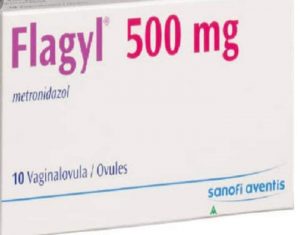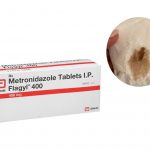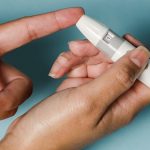Signs That Flagyl Is Working

Flagyl is a brand of metronidazole a medication used to treat infections of the reproductive system, gastrointestinal (GI) tract, skin, heart, bone, joint, lung, blood, nervous system, and other areas of the body.
Metronidazole capsules and tablets are also used to treat sexually transmitted diseases (STDs). Metronidazole extended-release (long-acting) tablets are used to treat bacterial vaginosis (an infection caused by too much of certain types of harmful bacteria in the vagina) in women.
How Flagyl Works
Flagyl is in a class of medications called nitroimidazole antimicrobials. The mechanism of action of Flagyl is not fully understood, but it is believed to work by binding to and disrupting the DNA of bacteria, causing the death of these microorganisms. More specifically, metronidazole is taken up by the bacteria and converted into its active form, which then binds to bacterial DNA and inhibits the synthesis of nucleic acids, leading to the death of the bacteria.
Flagyl also has some activity against protozoa, which are single-celled organisms that can cause infections. In these organisms, metronidazole is believed to work by disrupting the electron transport chain, leading to the production of toxic oxygen metabolites that cause the death of the organism.
How should Flagyl be used?
Flagyl comes as a tablet, an extended-release tablet, and as a capsule to take by mouth. Metronidazole capsules and tablets are usually taken as a one-time dose (or divided into two doses on 1 day) or two to four times daily for up to 10 days or longer. Flagyl extended-release tablets are usually taken once daily at least 1 hour before or 2 hours after a meal for 7 days. Follow the directions on your prescription label carefully, and ask your doctor or pharmacist to explain any part you do not understand. Take metronidazole exactly as directed. Do not take more or less of it or take it more often than prescribed by your doctor.
Swallow the extended-release tablets whole; do not split, chew, or crush them. Continue to take this medication even if you feel well. Do not stop taking it without talking to your doctor. If you stop taking this medication too soon or skip doses, your infection may not be completely treated and the bacteria may become resistant to antibiotics.

Signs That Flagyl Is Working
Peak concentrations of Flagyl are reached within one to two hours after dosing; however, it may take up to 48 hours before infection-related symptoms start to abate. Depending on the condition being treated, there are several signs you should notice when Flagyl starts working;
- If Flagyl is working for Bacterial vaginosis (BV), symptoms such as the thin, gray, white, or green vaginal discharge, foul-smelling “fishy” vaginal odor, vaginal itching, and burning during urination will begin to wane and disappear eventually. Bacterial vaginosis usually clears up in 2 or 3 days with antibiotics, but treatment goes on for 7 days. Do not stop using your medicine just because your symptoms are better. Be sure to take the full course of antibiotics. Antibiotics usually work well and have few side effects.
- If Flagyl is working for diarrhea, symptoms such as loose, watery, and frequent bowel movements will begin to reduce in frequency and abdominal pain will also wane. Most cases of diarrhoea clear up after a few days without treatment, in children, diarrhea will usually pass within 5 to 7 days and will rarely last longer than 2 weeks. In adults, diarrhea usually improves within 2 to 4 days, although some infections can last a week or more.
- If Flagyl is working for diverticulitis, abdominal pain which is the most common sign of the condition will begin to cease, and if you have fever, nausea, vomiting, chills, cramping, and constipation those also will begin to respond to the medication but it can take up to 48 hours before all-related symptoms start to abate. Most cases of promptly treated diverticulitis will improve in 2 to 3 days. If your doctor prescribed antibiotics, take them as directed. Do not stop taking them just because you feel better.
- If Flagyl is working for Clostridium difficile, symptoms such as watery diarrhea as often as 10 to 15 times a day and abdominal cramping and pain, which may be severe will start abating. Flagyl is approved by the Food and Drug Administration for the treatment of C. diff infection. Recent research by the investigators group has shown that hospitalized patients who took Flagyl had a decreased chance of getting C. Diff infection.
- If Flagyl is working for trichomoniasis, the following symptoms should begin to abate; Itching, burning, redness or soreness of the genitals; Discomfort with urination; A change in their vaginal discharge (i.e., thin discharge or increased volume) that can be clear, white, yellowish, or greenish with an unusual fishy smell. Treatment of trichomoniasis with oral or intravenous metronidazole is effective in 85 to 95% of cases, and when treatment fails to cure, a number of factors must be considered.
- If flagyl is working for SIBO, symptoms such as can cause painful gas, bloating, nausea, belching should begin to disappear. However, other systemic symptoms might take a longer time to abate. Metronidazole provides symptom relief in irritable bowel syndrome, without affecting rectosigmoid motility.
- If Flagyl is working for H pylori, symptoms such as ache or burning pain in the abdomen will begin to reduce. If you have ulcers caused by H. pylori, you’ll need treatment to kill the germs, heal your stomach lining, and keep the sores from coming back. It usually takes 1 to 2 weeks of treatment to get better. The European Helicobacter Study Group has advised doctors to employ a metronidazole-based triple therapy as the best choice in treating H. pylori. However, up to 3 in 10 people develop some side effects when they take eradication therapy. These include indigestion (dyspepsia), feeling sick (nausea), diarrhea and headaches.
What are the possible side effects of Flagyl?
Flagyl doesn’t cause drowsiness, but it can cause other side effects.
More common side effects
The more common side effects that can occur with Flagyl include:
• headache
• loss of appetite
• nausea or vomiting
• diarrhea
• heartburn
• cramping in your stomach area
• constipation
• metallic taste
If these effects are mild, they may go away within a few days or a couple of weeks. If they’re more severe or don’t go away, talk to your doctor or pharmacist.
Serious side effects
Call your doctor right away if you have serious side effects. Call 911 if your symptoms feel life-threatening or if you think you’re having a medical emergency. Serious side effects can include:
• Nervous system effects, including seizures and encephalopathy (abnormal brain function). Symptoms can include:
o convulsions (sudden movements caused by tightening of your muscles)
o dizziness
o headache
o confusion
o ataxia (loss of control of body movements).
You may find useful information on Can I Eat Bananas While Taking Metronidazole?





